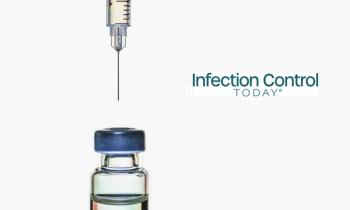
How Contaminated Is Your Stretcher? The Hidden Risks on Hospital Wheels
Despite routine disinfection, hospital surfaces, such as stretchers, remain reservoirs for harmful microbes, according to several recent studies. From high-touch areas to damaged mattresses and the effectiveness of antimicrobial coatings, researchers continue to uncover persistent risks in environmental hygiene, highlighting the critical need for innovative, continuous disinfection strategies in health care settings.
Patient stretchers are the workhorses of every hospital, shuttling patients between departments, procedures, and nursing units. But how clean are these high-touch surfaces, really? Mounting evidence suggests that even with routine cleaning, stretchers, and especially their rails and mattresses, can harbor a surprising and potentially dangerous array of microbes, including pathogens responsible for health care-associated infections (HAIs).
Recent studies have shown that hospital surfaces, including stretchers, remain contaminated, even after standard disinfection procedures. Chatterjee et al1 found that high-touch surfaces like bed rails, workstations, and simulation manikins routinely harbored a diverse mix of bacteria, including known human pathogens, such as Staphylococcus aureus, Enterococcus, Escherichia coli, and Klebsiella aerogenes. Alarmingly, about half of the bacteria found on these surfaces were also detected in clinical samples from patients, underscoring the real risk of cross-transmission.
A pilot randomized controlled trial in an emergency department found that 28.1% of high-touch stretcher rails exceeded the contamination threshold of 2.5 colony-forming units per square centimeter (CFU/cm²) despite routine cleaning.2 Notably, MRSA (methicillin-resistant Staphylococcus aureus) was detected on more than 20% of rails even after cleaning and before patient use. This highlights the persistent challenge of maintaining the safety of these surfaces, particularly in fast-paced, high-turnover environments such as the emergency department.
It’s not just the rails; stretcher mattresses themselves are often overlooked reservoirs for bacteria. Marks et al3 found that over 32% of inspected mattresses in Canadian acute care hospitals had visible damage, with stretchers showing even higher rates than beds. Damaged surfaces cannot be properly disinfected, allowing fluids and pathogens to penetrate and persist. This creates a hidden risk for every patient transported on a compromised stretcher.
Contaminated stretchers can act as mobile vectors, spreading pathogens from one patient to another and across different hospital departments. Studies have linked contaminated surfaces to increased rates of HAIs, and the presence of multidrug-resistant organisms on stretchers is a particular concern for vulnerable patients.4
What Can Be Done?
- Enhanced Cleaning Protocols: Routine cleaning may not be enough. Consider periodic deep cleaning, the use of antimicrobial coatings, or technologies such as UV-C disinfection.
- Regular Inspection and Maintenance: Damaged mattresses and rails should be repaired or replaced promptly to prevent them from becoming reservoirs for infection.
- Staff Training: Ongoing education about proper cleaning techniques and the importance of high-touch surface hygiene is essential.
- Monitoring and Feedback: The use of adenosine triphosphate (ATP) monitoring or fluorescent marker testing to validate cleaning results can help ensure that cleaning protocols are effective.
Your stretcher may appear visually clean, but research suggests it could still be contaminated even after routine disinfection. Damaged surfaces and lapses in cleaning only amplify the risk of contamination. Health care facilities must remain vigilant, combining rigorous cleaning, maintenance, and monitoring to ensure every patient transport is as safe as possible.
References
- Chatterjee P, et al. Study finds hospital surfaces can harbor harmful microbes even after routine disinfection. APIC News. 2024. Accessed July 1, 2024.
https://apic.org/news/study-finds-hospital-surfaces-can-harbor-harmful-microbes-even-after-routine-disinfection/ - Antimicrobial surface coating in the emergency department as a continual disinfection intervention: a pilot randomized controlled trial. Can J Infect Control. 2024;
https://pmc.ncbi.nlm.nih.gov/articles/PMC11520898/ - Marks B, et al. Uncovering the rates of damaged patient bed and stretcher mattresses in Canadian acute care hospitals. Can J Infect Control. 2018;33(3):171-175. Accessed July 1, 2024.
https://cleanpatch.ca/wp-content/uploads/2020/08/Surface-Medical-Publication-in-Canadian-Journal-of-Infection-Control-Fall-2018.pdf - Study highlights contamination of high-touch hospital surfaces. CIDRAP News. Published 2024. Accessed July 1, 2024.
https://www.cidrap.umn.edu/antimicrobial-stewardship/study-highlights-contamination-high-touch-hospital-surfaces
Newsletter
Stay prepared and protected with Infection Control Today's newsletter, delivering essential updates, best practices, and expert insights for infection preventionists.






